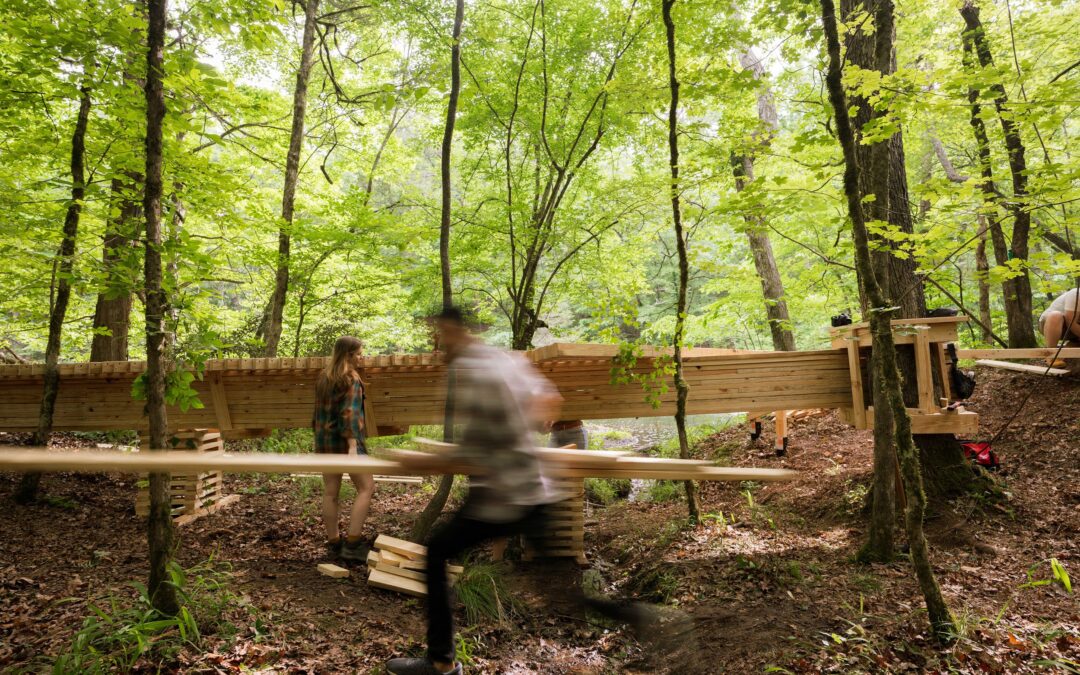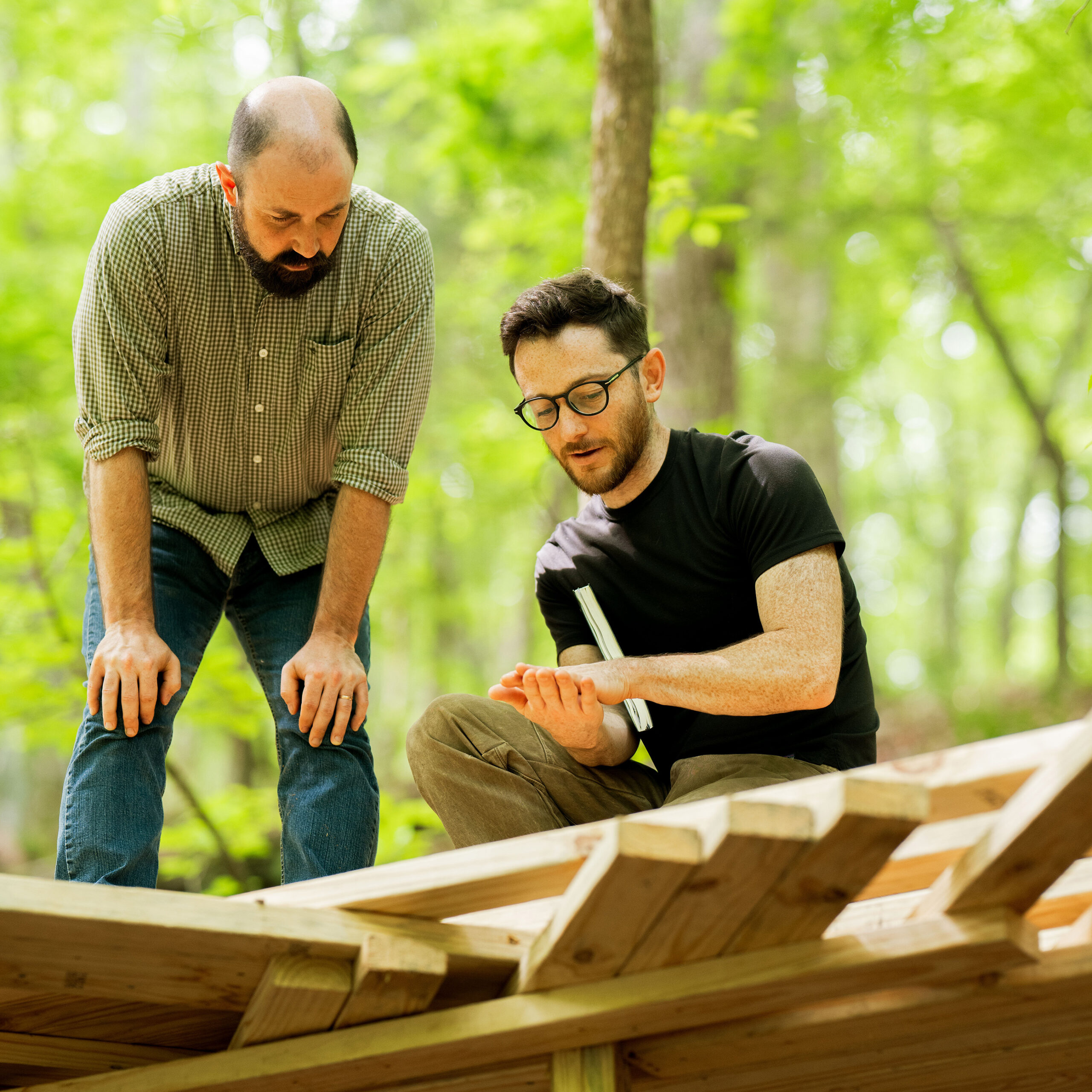
PARTNER:
Stick Architecture
HQ:
Birmingham, AL
People:
Will McGarity, Founder & Principal
Charlie Hunter-Cook, Project Manager & Designer
Meet Stick Architecture
Good design considers the people and places that make our world unique. That’s a guiding principle for Stick Architecture, a Birmingham, AL-based firm that creates built environments that support both people and the natural world. Led by a small team of curious thinkers, Stick Architecture blends wood-based research with architectural design to create spaces that are thoughtful, functional, and resilient.
The two-person team of Will McGarity (YTA ’25), Founder & Principal, and Charlie Hunter-Cook, Project Manager & Designer, is guided by many things, including the belief that they simply cannot sit at a desk eight hours a day, five days a week. Spending time in and learning from Alabama’s natural environment is a non-negotiable for them.
Additionally, the two (and the firm) are guided by several core beliefs that we at Your Town Alabama can relate to. Some of the ones we particularly felt aligned with are:
- Architecture should be responsive to place.
- Stories are as vital to a project as its physical location.
- Collaboration and dialogue happen when we intentionally cultivate teams with diverse backgrounds, expertise, and viewpoints.
A casual conversation over coffee about those shared ideals led to a partnership between Your Town Alabama and Stick Architecture.
StickBuilt
In 2024, Stick Architecture launched the inaugural StickBuilt. McGarity will tell you it’s an immersive, cross-disciplinary design-build intensive. We’ll tell you it’s architecture camp.
Architectural students, professionals, and educators sleep in tents and work in the woods along the Little Cahaba River for five days—those YTA cabins don’t sound too rustic after all—while visioning, building, and improvising with wood in real time at 1:1 scale.
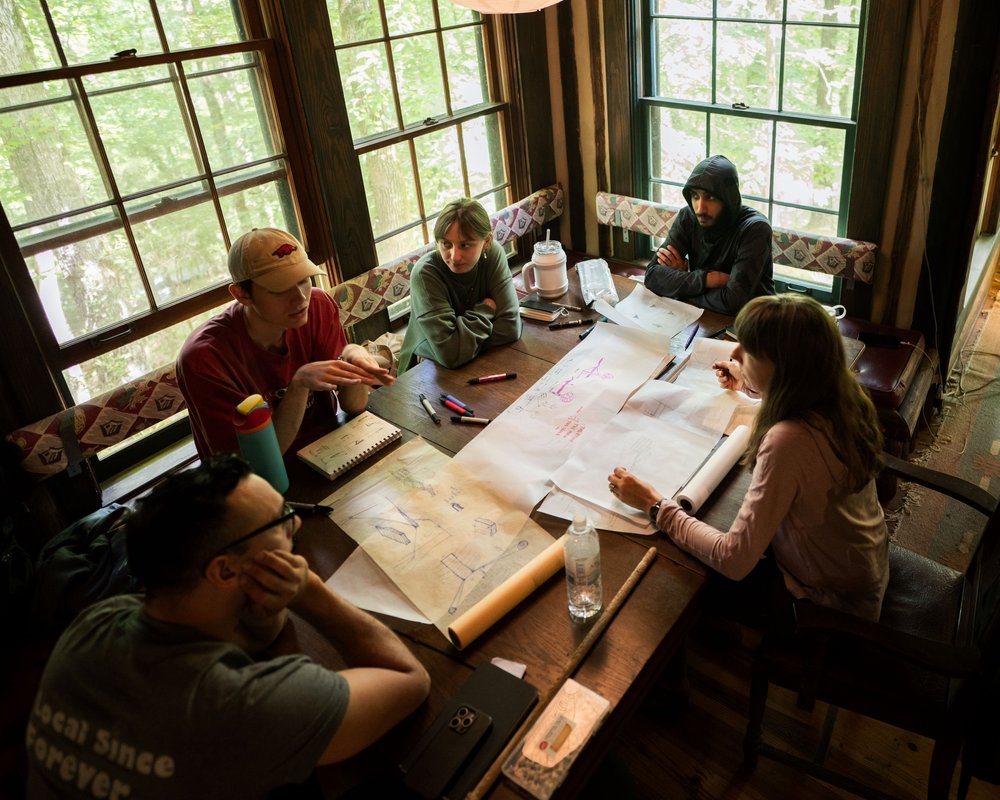
Sketching is an important part of the visioning process and is one of the few tasks done indoors at StickBuilt.
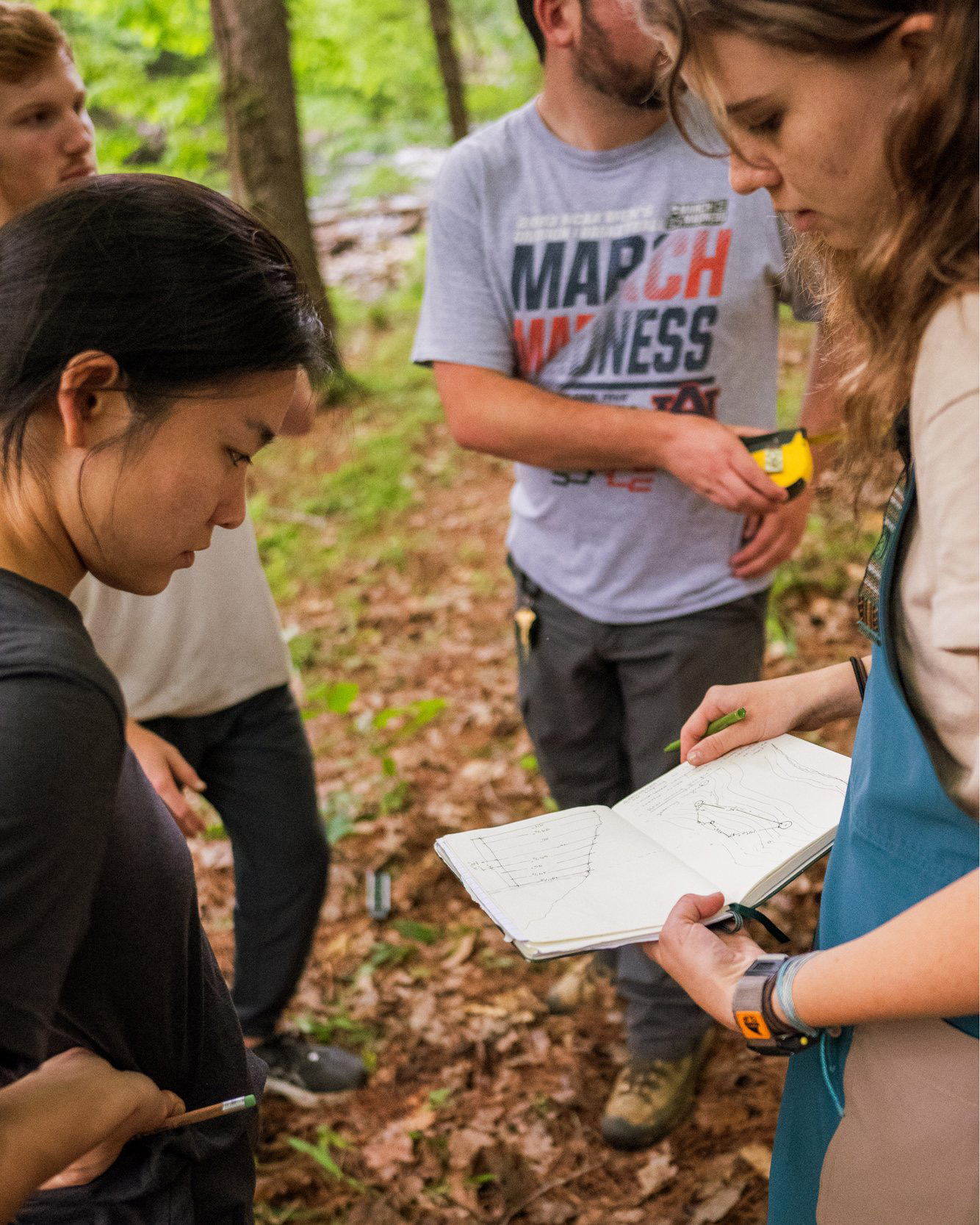
The sketching and improvising never stops!
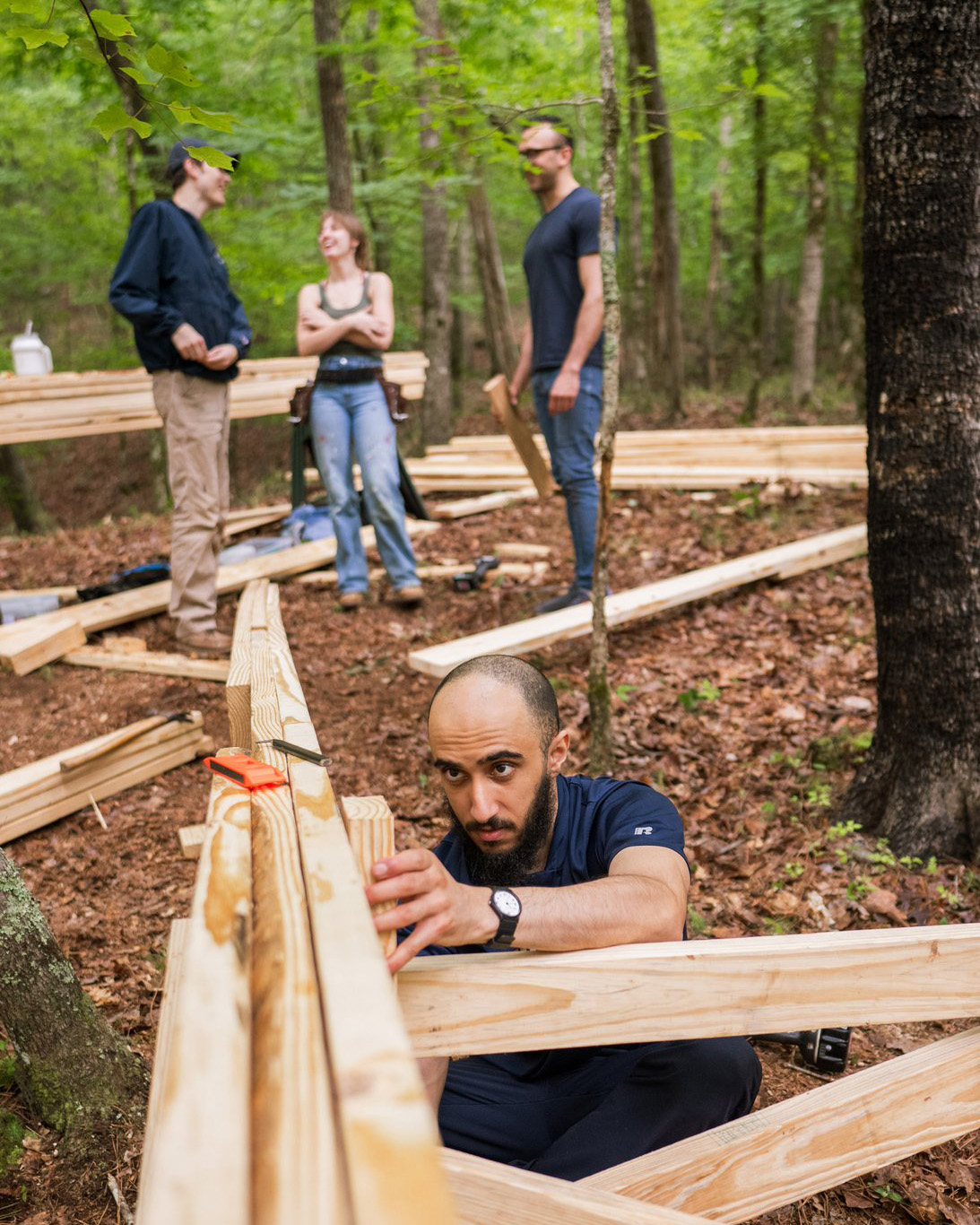
It's hard to concentrate surrounded by beautiful forest and great people!
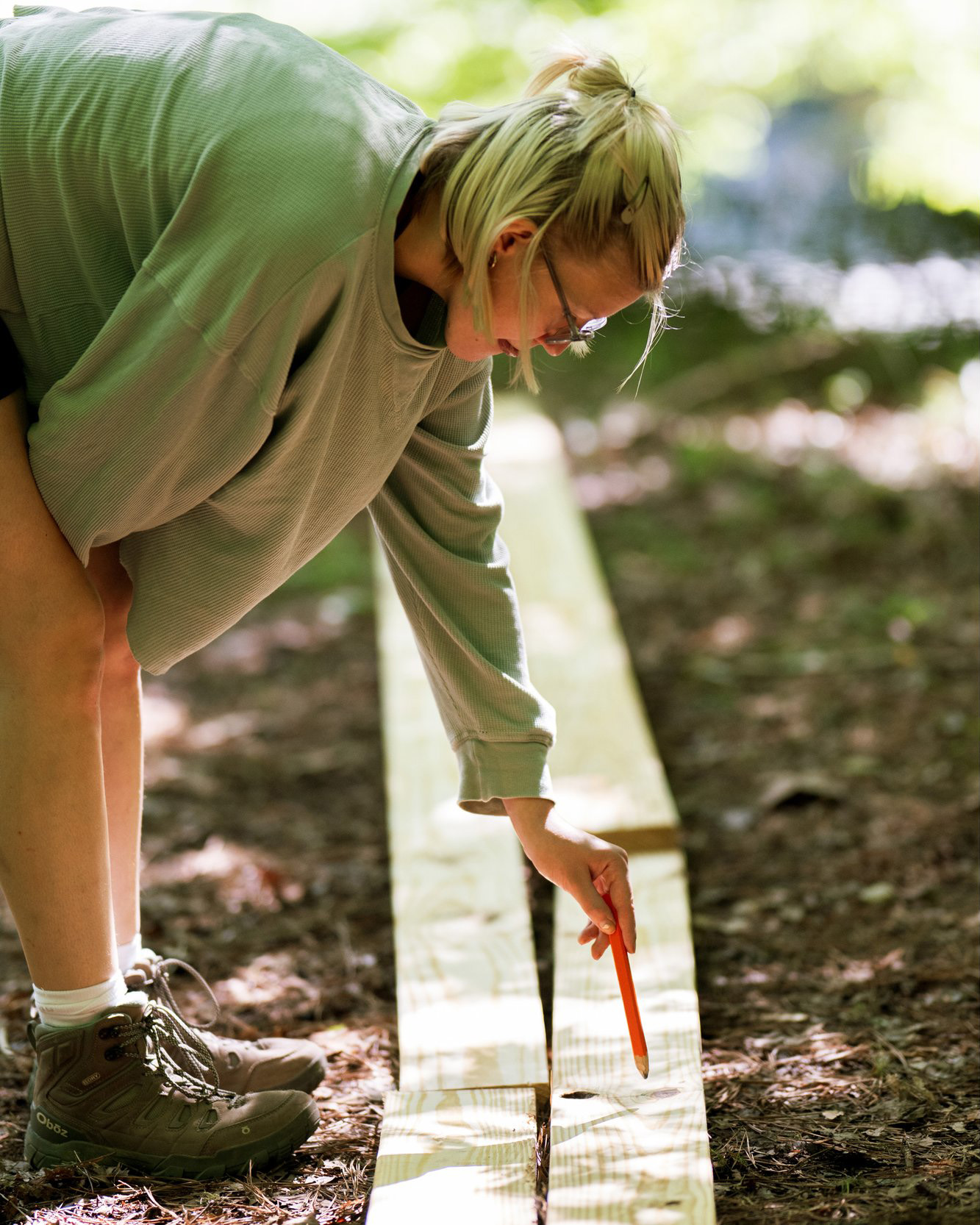
You'll get hands-on experience with wood at StickBuilt.
With a schedule packed with learning, designing, building, and growing relationships, it’s a pretty intense five days—but that’s on purpose.
“There are special things that happen in those conditions of intense focus, hard work, little distraction that you just don’t get elsewhere,” said Hunter-Cook.
But don’t let them fool you—there’s still time built in for singing around the campfire and swimming in the river.
“On some more trivial levels, StickBuilt is about just being in the woods with good people, building something.”
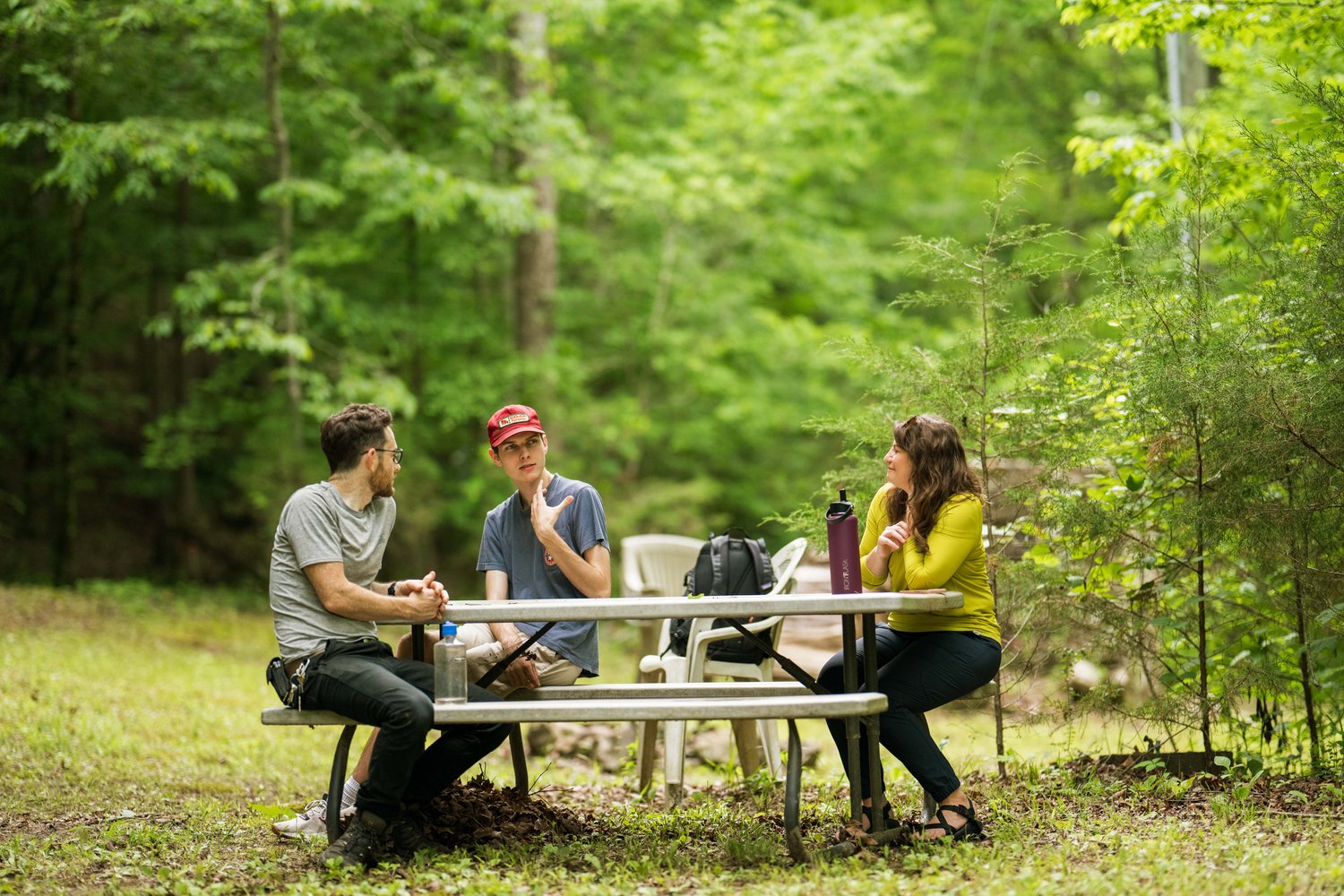
Spending five days in the woods is a perfect backdrop for building lasting relationships.
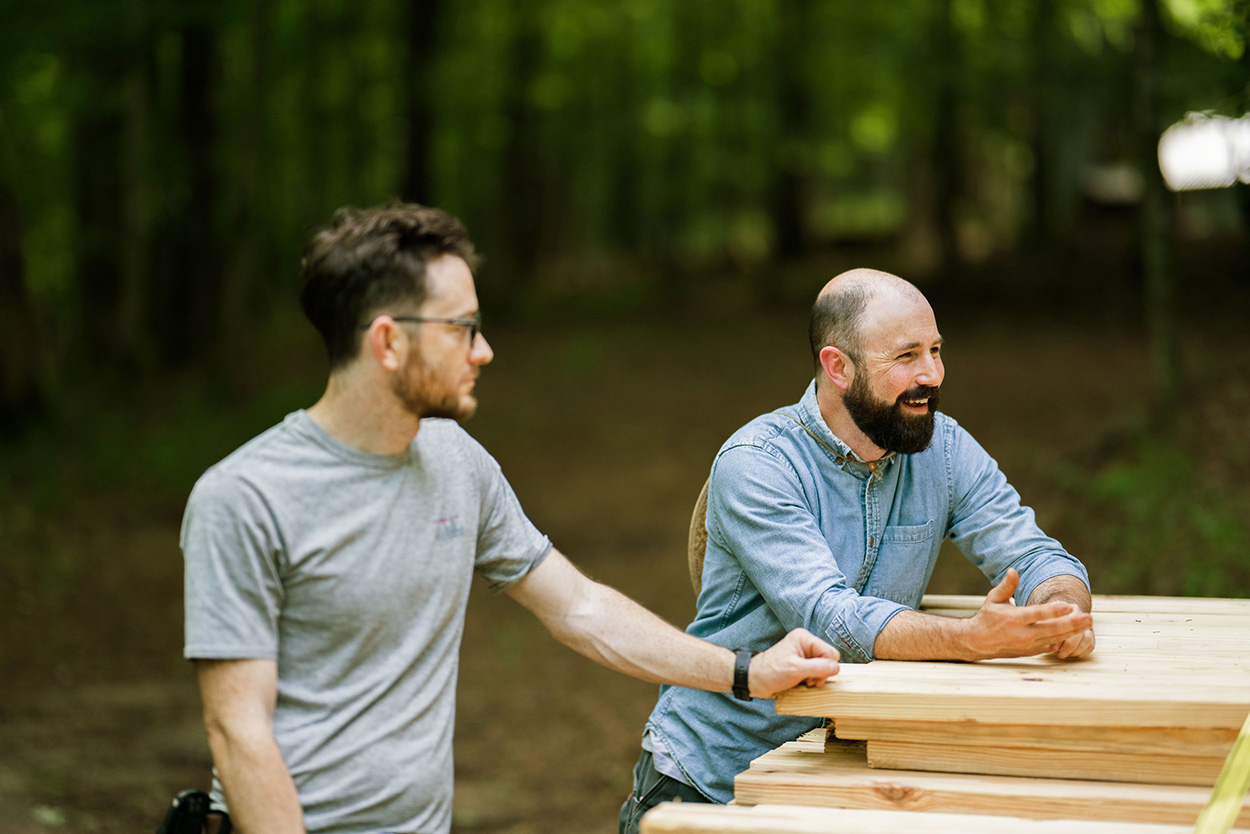
StickBuilt helps McGarity & Hunter-Cook fulfill their non-negotiable demand of getting to work in the outdoors—clearly, it makes them happy!
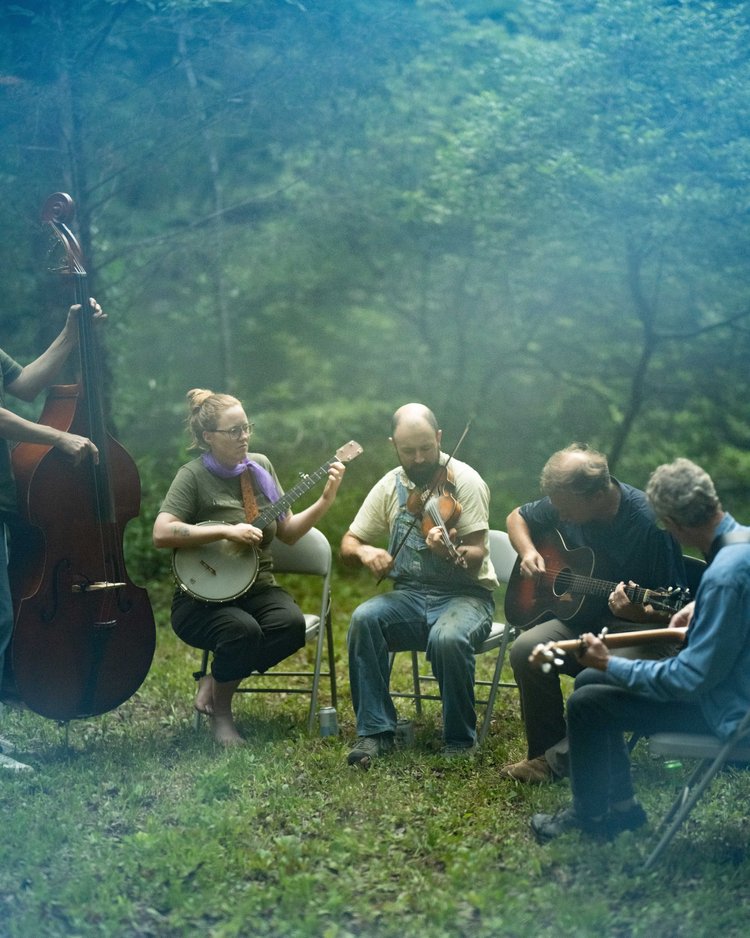
A circle of folk musicians is a must at an event held in the Alabama forest.
StickBuilt incorporates presentations from cross-disciplinary sources so students can understand the broader context of what they build. McGarity explained that architects must listen to and learn from other disciplines so they can apply outside processes to developing creative solutions.
McGarity and Hunter-Cook said that StickBuilt is a special experience for students and professionals alike, many of whom have never had the chance to work with wood in this way, even after years of practicing architecture.
Hunter-Cook is interested in exploring big, global concerns like climate by creating special moments in one’s local environment that build affection for the places around you.
“I think those five days building, engaging directly with wood in the woods, is a way to try and reawaken that sense of local affection that architects then carry into their practice,” said Hunter-Cook. “They’re making decisions that have much wider implications.”
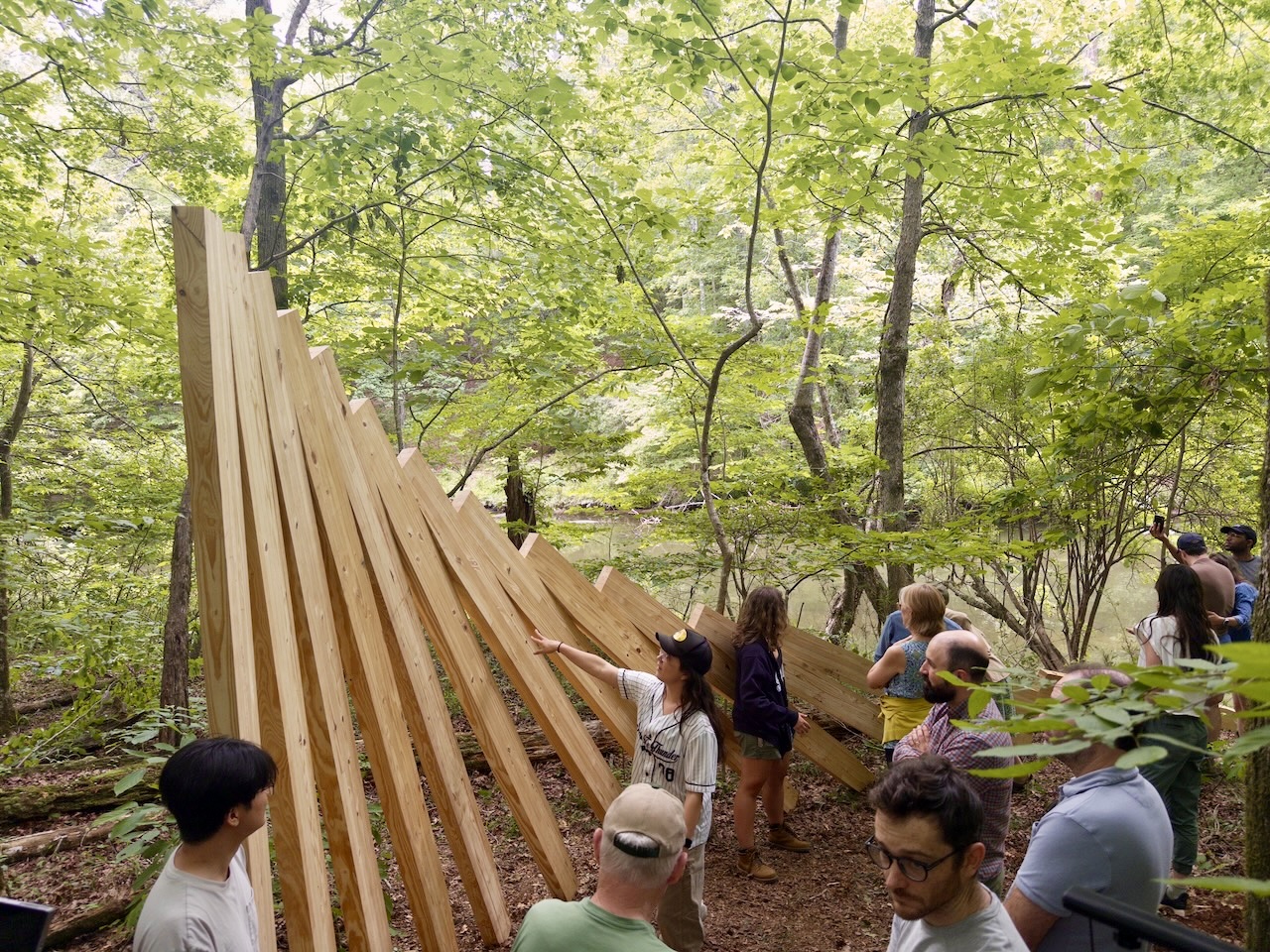
Each year, StickBuilt participants are given a theme and a series of challenges to respond to. In 2025, the theme was "Time."
Like many good programs, StickBuilt came out of a conversation between friends about their dreams for the world and their love for the outdoors, forests, and the material they give us.
“On some more trivial levels, StickBuilt is about just being in the woods with good people, building something,” said Hunter-Cook. “And it also happens to be a rigorous, serious attempt to try and bring these architects together, expose outsiders to Birmingham and Birmingham to outsiders.”
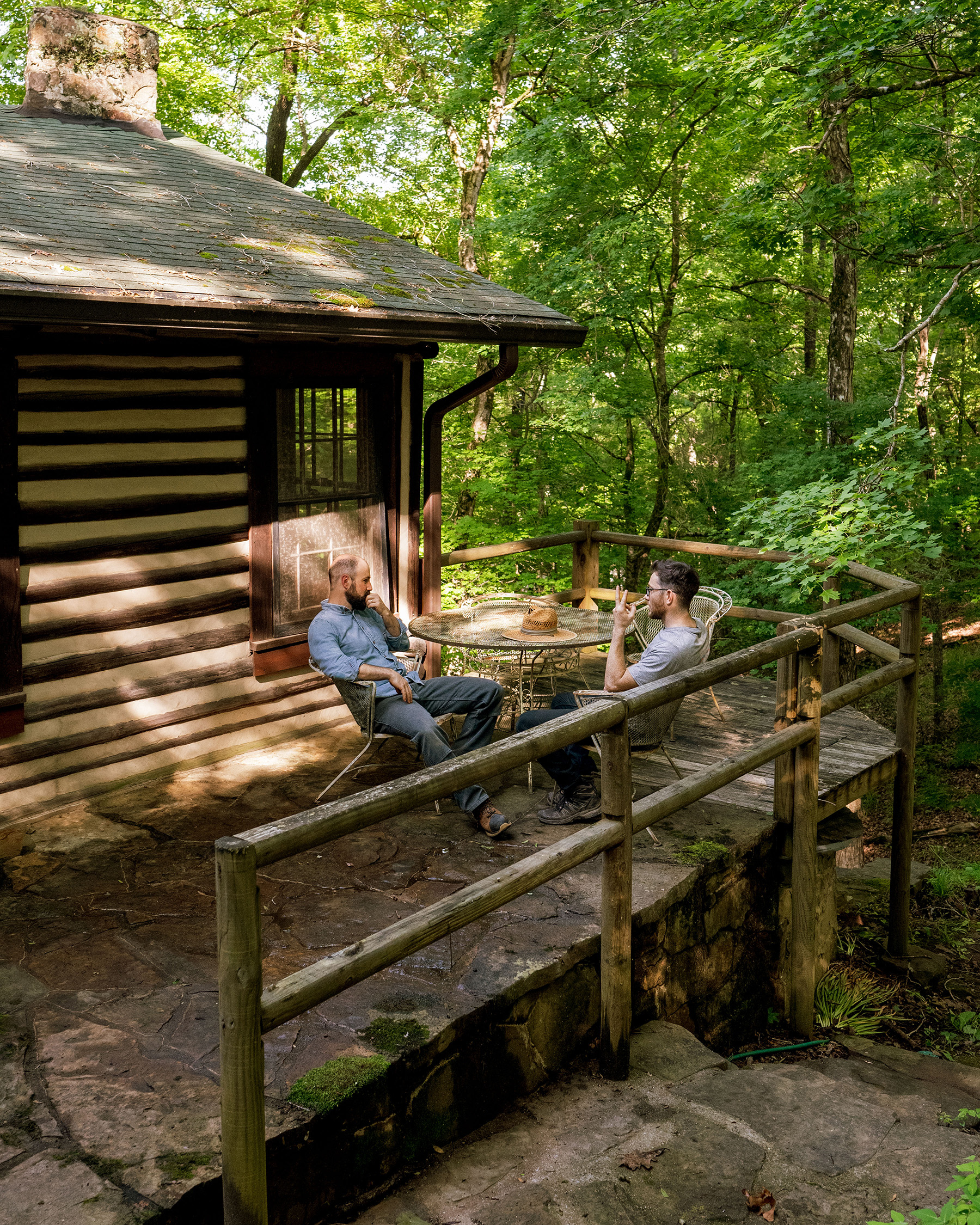
Hunter-Cook & McGarity having a conversation on the porch of a cabin at the StickBuilt site. While participants don't stay in these cabins, they're a wonderful gathering place for eating, drawing, and building relationships.
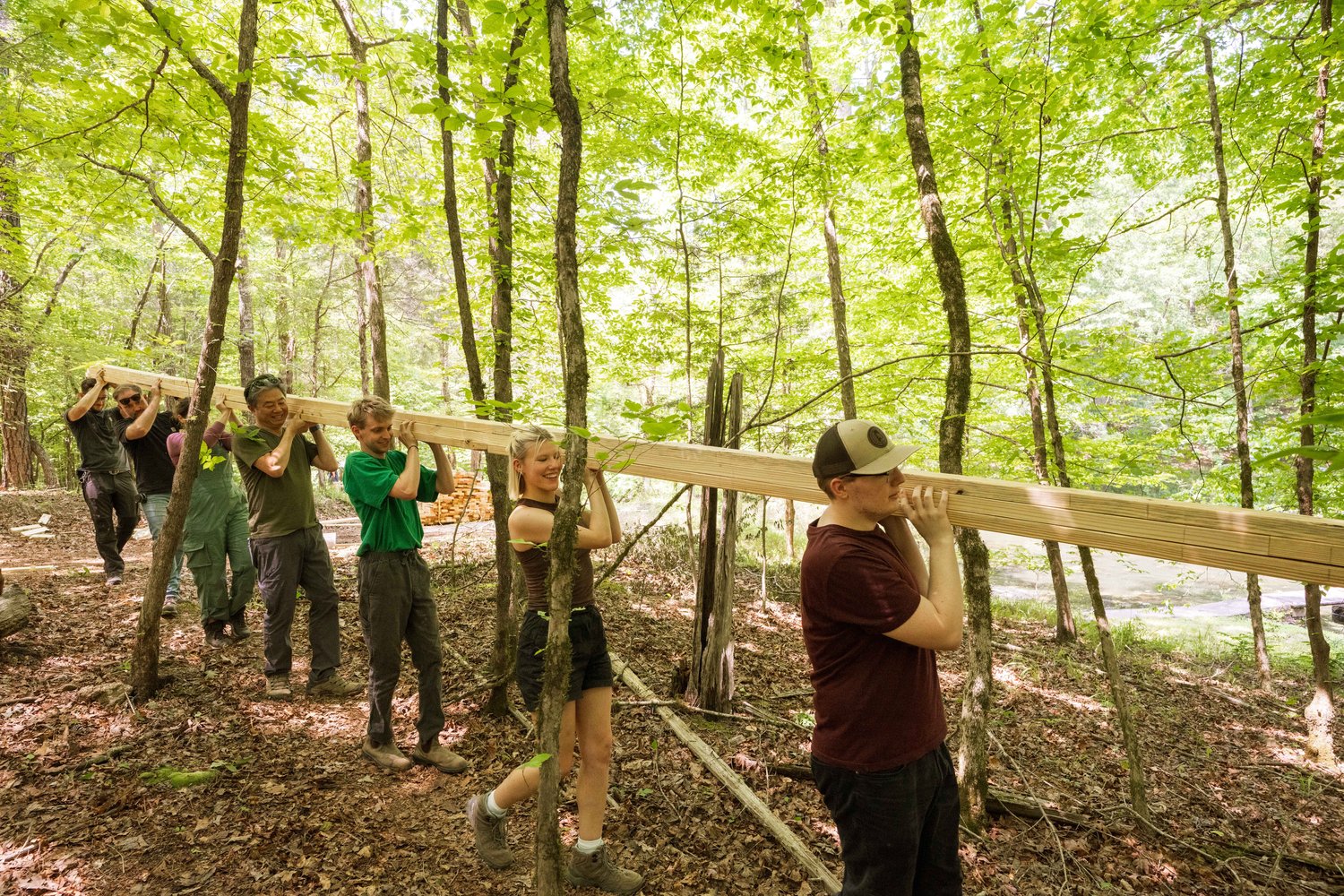
Teamwork is critical at StickBuilt!
Stick + Your Town Alabama
Your Town Alabama and Stick Architecture partnered to host the second annual StickBuilt in 2025. In this first year of collaboration, YTA is offering administrative support for the event and technical advice for participants.
When reflecting on why a partnership between Stick Architecture and Your Town Alabama makes sense, Hunter-Cook noted that both programs capture the same kind of magic: bringing together strangers and challenging them to build consensus on a tight timeline.
Moving forward, we are eager to continue collaborating, sharing ideas, learning from each other, and strengthening both events in the process. That experience of leaping into the unknown is also a shared value of both organizations: knowing that something good will happen because there’s a common foundation.
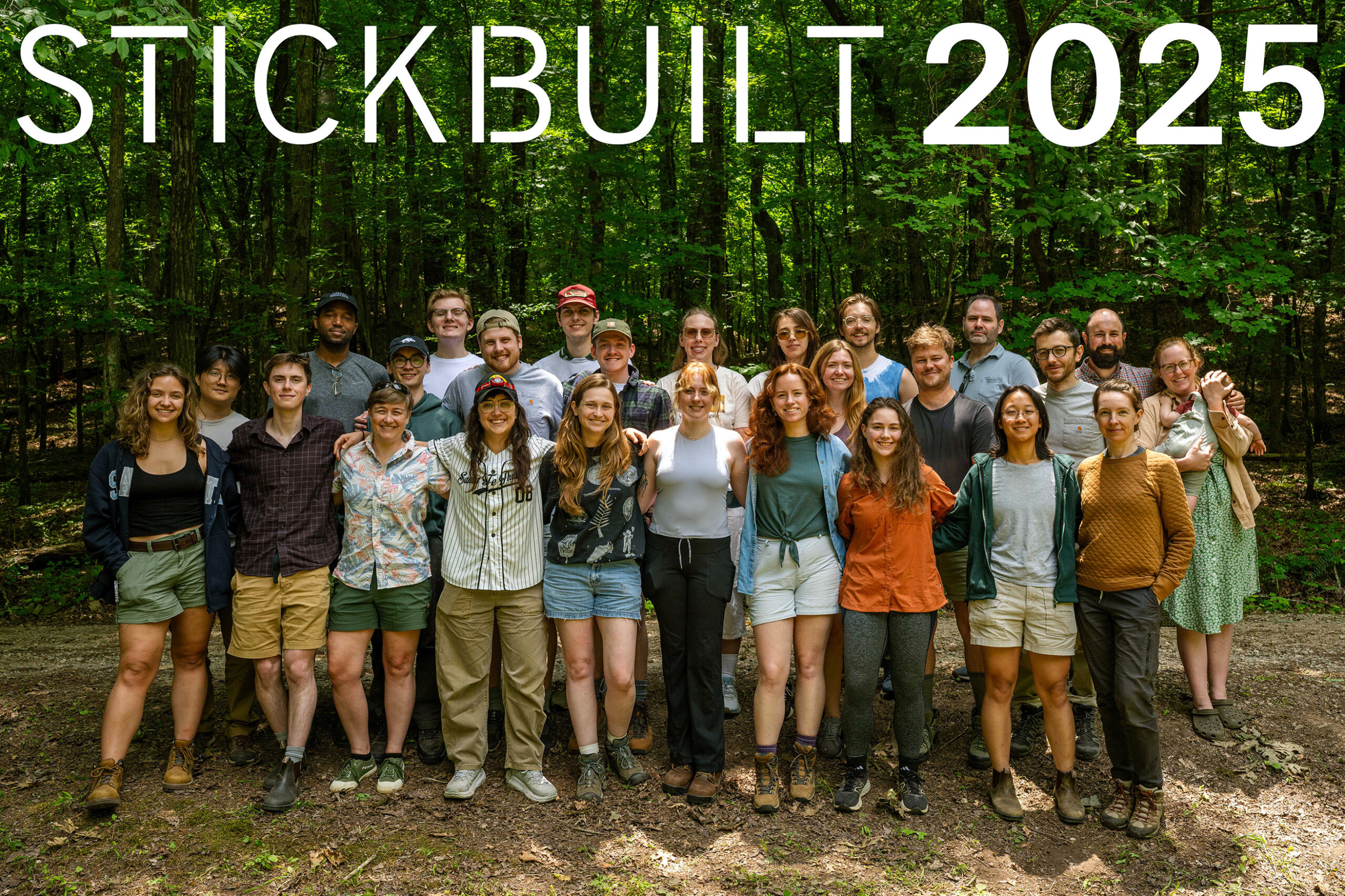
StickBuilt 2025 Class
Building Alabama
One of the ever-present questions for both Your Town Alabama and Stick Architecture is “How do we rebuild our small towns and support economic growth in the state?”
Stick Architecture offers one answer: wood.

“Wood is our region’s oldest, most renewable, most abundant building resource.”
It’s no secret to Alabamians that wood is a critical part of our state economy. The forestry industry’s total annual economic impact in the state is $36 billion. It’s an industry that many rural communities rely on for jobs and economic growth.
To Stick Architecture, wood is everything. As a firm that values experimentation, research, and education, they are driven by “curiosity about this beautiful, strong, renewable, and abundant building material.”
“Wood is our region’s oldest, most renewable, most abundant building resource,” said Hunter-Cook. “The American Southeast is one of the most productive softwood-producing regions in the world.”
Stick Architecture sees a future where architects take mass timber – a new category of wood products where multiple solid wood panels are nailed together as a strong, low-carbon alternative to concrete and steel – and apply it to stick framing, one of the oldest building techniques that was used across Alabama for generations.
The adoption of mass timber supports local economies, is more resilient to fire and earthquakes than other techniques, and has the potential to be carbon-neutral or even carbon-negative.
“The trees [for mass timber] are grown in rural communities,” said Hunter-Cook. “By and large, the advanced twenty-first-century manufacturing facilities that are starting to show up in Alabama and the Southeast are in rural communities.”
Yet, mass timber is a relatively new technology in the U.S. and hasn’t been adopted on a mass scale, especially in the rural Southeast. While much of the mass timber is harvested and manufactured in this region, McGarity explains that most of the material is exported for use elsewhere.
Stick Architecture hopes to see mass timber stay here in Alabama’s rural communities. They have a vision where the adoption of mass timber will help grow Alabama’s local forestry and manufacturing economies, and can be adopted in the schools, homes, and municipal buildings of the communities that make it happen.
McGarity and Hunter-Cook hope that StickBuilt can encourage adoption of this new resource across Alabama and the Southeast to begin reestablishing that local loop: “local forest, local manufacturing, local building.”

The forest in Alabama is not only an incredible resource, it also offers an incredible view.
Stick Architecture isn’t the only group that believes mass timber is important for Alabama. Auburn University’s Mass Timber Collaborative is a leader in mass timber research, education and outreach.
If you’re interested in learning more about wood and its importance to Alabama, check out the Alabama Cooperative Extension System’s article on cross-laminated timber, or read the in-depth research piece McGarity wrote as part of his Auburn University Forestry Architecture Fellowship on the history of the Southern Yellow Pine.

